REEL RETRO CINEMA: With Captain America: Brave New World out, dig this INSIDE LOOK at a forgotten flick and its comics adaptation…

By ROB KELLY
The time: Sometime in the summer of 1989. The place: The Westmont theater in (appropriately) Westmont, NJ. It was during one of my nine(!) trips to see Batman that I saw it hanging in the lobby:
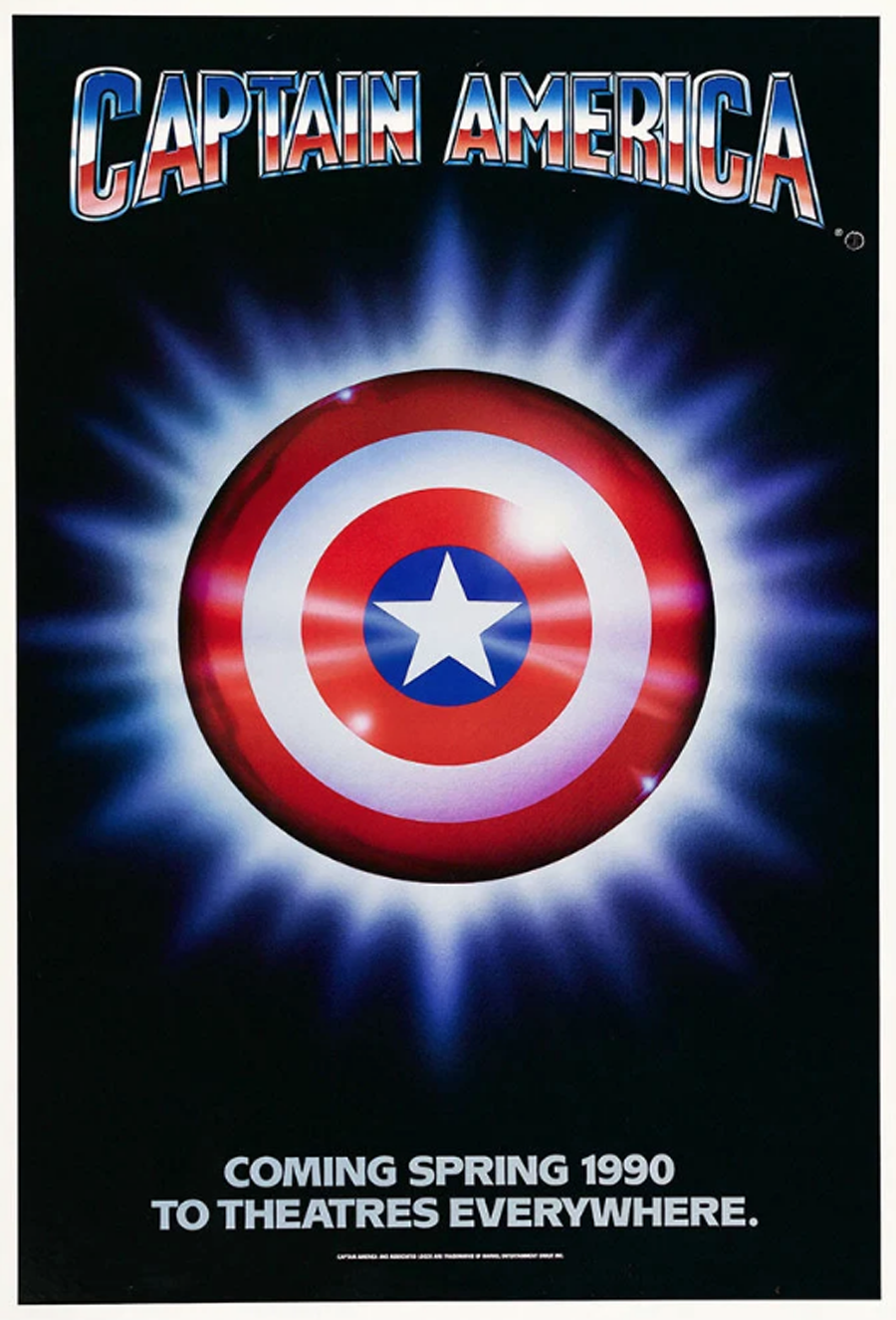
I had heard rumors through the comic book grapevine that a live-action Captain America movie was in production, but here was red, white, and blue proof that not only did the film exist, but that it was coming to theaters, soon.
Of course, that never happened.
While it did hit screens overseas, director Albert Pyun’s Captain America never did so in Steve Rogers’ place of birth (literally, metaphorically, and ironically). More rumors about the movie swirled around in fan circles, but with Batman Returns already coming down the pike, it seemed that, once again, Marvel just could not manage to get one of their characters onto the big screen.
Eventually Captain America hit home video and even though the advance word was bad, I eagerly took the film home to check it out for myself. Captain America was, and is, my favorite Marvel superhero and while he’d appeared in live action a few times before (to… mixed results, let’s say), my enthusiasm for the film was still high.
Then I saw it.
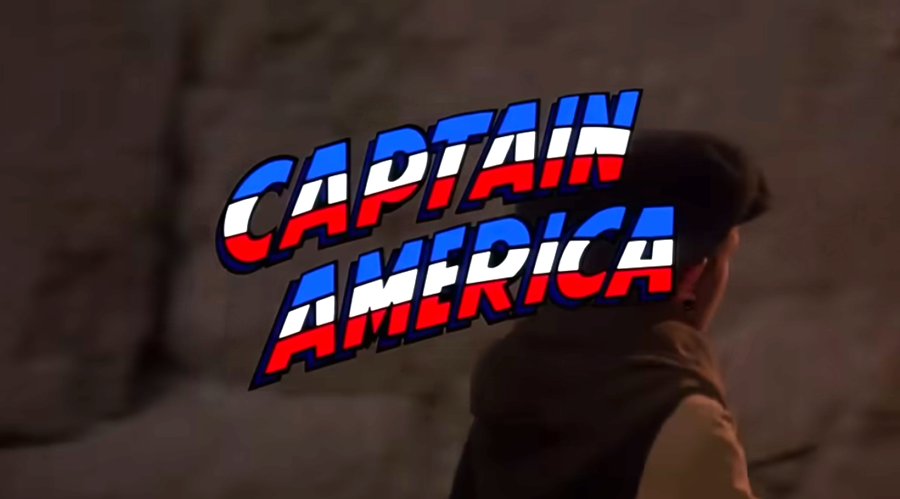
As anyone who has watched it knows, Captain America is not good. Really not good. It’s cheap, sloppy and, most fatally, poorly written. After we are treated to an origin story for the Red Skull (who, for some reason, is Italian, not German), we follow the scientist whose Super Soldier formula turned a young Italian boy into the villainous Skull to America, where her guilt has driven her to change sides in the war. Now working for the US Government, she transforms skinny kid Steve Rogers into Captain America.
The good Captain is dropped into his first mission—to stop the Red Skull—which he fails at, miserably. The Skull then straps Cap onto a rocket aimed at the White House, but Cap decides to wait until he’s just a few thousand feet away from its target to try and redirect the bomb’s trajectory. He does, and the missile lands in Alaska(!), burying Cap in the ice for 50 years.
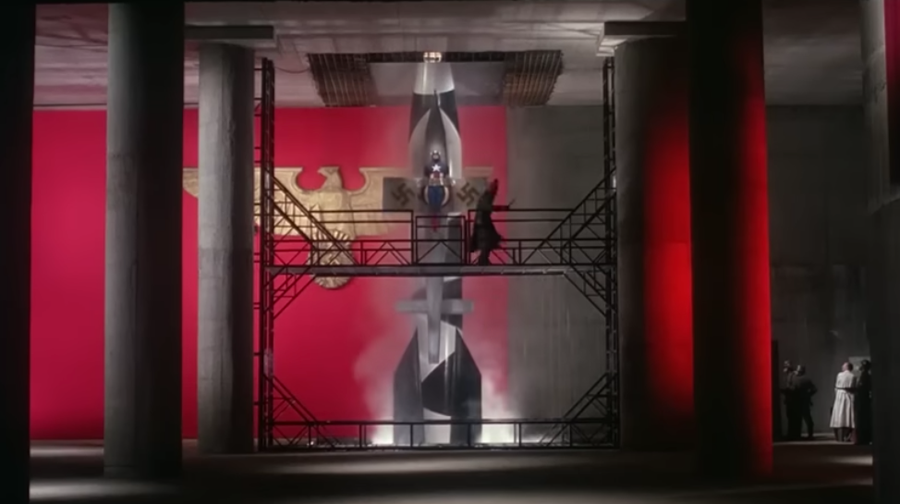
Flash-forward to the present day, and a young boy that saw Cap heading for the White House has grown up to be president of the United States. When word of this strangely garbed man reappearing half a century later hits the news, he enlists his pal, a newspaper reporter, to investigate.
The reporter manages to drive all through Canada, into Alaska, and runs into Captain America while he’s walking from Alaska to California. What luck! The reporter fills Cap in on everything he’s missed, and eventually they get to Steve’s old neighborhood, where he finds his old girlfriend, now an elderly woman with a daughter named Sharon.
The Red Skull, still alive, has been quite busy during Cap’s Ice Nap: We learn he’s been responsible for, basically, all the bad stuff in US history (assassinating JFK, RFK, MLK, cancelling Batman ’66). When he learns Captain America—his “brother,” as he keeps saying—is back, he sends some of his goons, including his daughter, to kill him.
This leads to Cap’s old flame and the reporter to get killed, and Steve and Sharon go on the run. The Red Skull kidnaps the president, drags him back to Europe, leading to a final confrontation between these two arch foes.
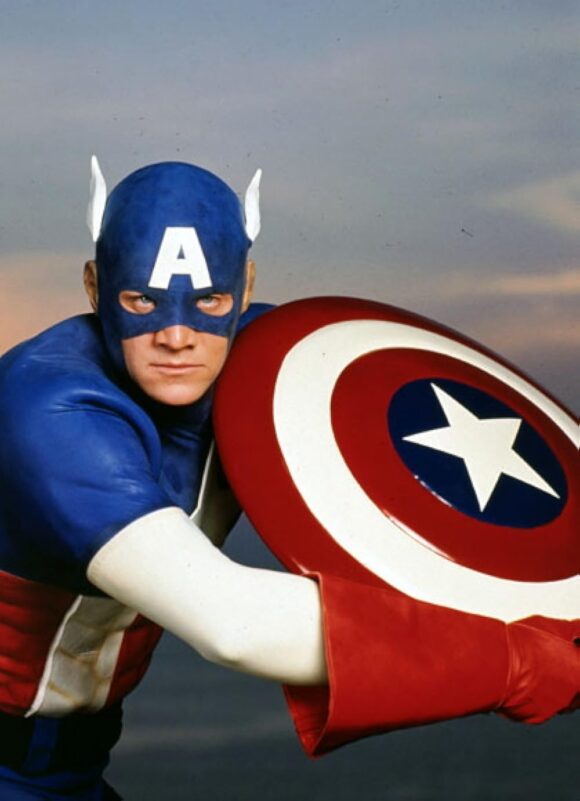
Over the decades, the sad back story of Captain America has been told. While it was started with good intentions, the budget was slashed to nearly nothing just before shooting, leaving director Pyun to patch together, as best he could, something that resembled a live action Captain America movie. And, for the most part, he did an admirable job under impossible circumstances.
As I mentioned earlier, the main problem I have with Captain America is with the screenplay. Good writing doesn’t cost more than bad writing, and the choices made here range from dumb to incomprehensible. Why does the movie attempt to make Red Skull—the Red Skull, one of the most enjoyingly hissable super-villains in the history of comics—sympathetic? Why does Captain America get to go on only one mission—hell, half a mission, really—before he’s put on ice? Why does Cap get thawed out of the ice and just storm off like he’s The Thing (John Carpenter’s, not Marvel’s), never saying a word? Why is a secretly traitorous Army general in charge of implementing the president’s environmental agenda? (Cue the “That’s Not How Any of This Works” gif.) Why is Steve Rogers from Redondo Beach, California, not New York, always a key part of his character? (Well, that one was probably completely a budget thing, so the film didn’t have to try and fake 1940s NYC.)
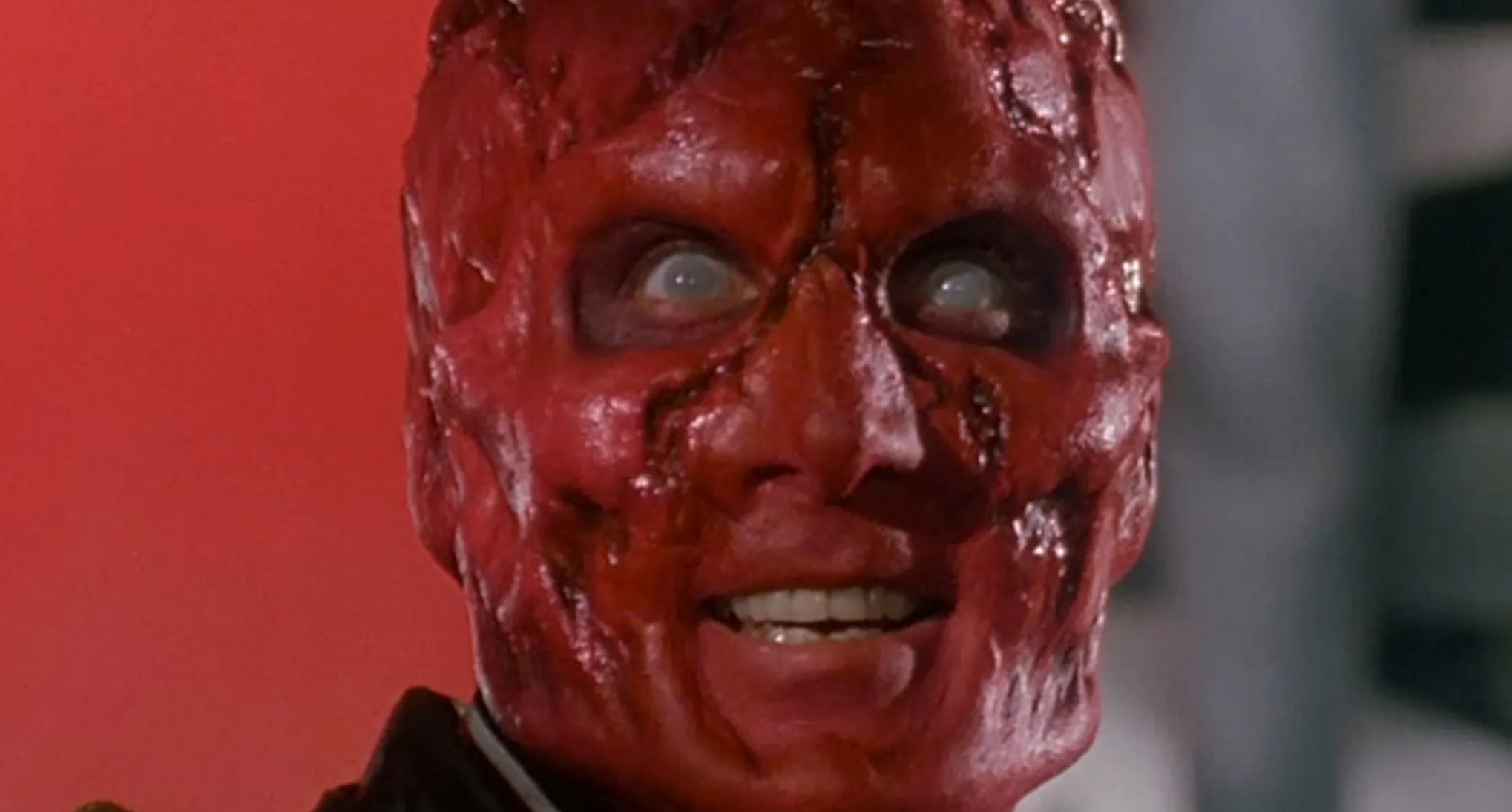
Like so many comic book movies did, Captain America borrows from 1989’s Batman. Namely, the attempt to pair up Captain America and the Red Skull and present them as sort of two sides of the same coin, forever linked by their origins (Skull calls Cap “brother” so many times it actually annoys our hero, a sentiment I completely agreed with).
Not that Batman was some deep examination of the human psyche, but Captain America doesn’t remotely earn any sort of that high-falutin’ talk. Since Captain America, the man and symbol, only went on half a secret mission and then disappeared for 50 years, he doesn’t represent any sort of American ideal that the Red Skull is the dark side of or response to. And don’t even get me started on the movie’s decision to have the Skull cover his nightmarish red visage with make-up that makes him look like he wandered over from that year’s Dick Tracy.
If you squint really, really hard, you can see, maybe sorta, the Captain America movie that Albert Pyun set out to make. It’s filled with solid Hollywood supporting actors (Ronny Cox, Superman’s Ned Beatty, A Christmas Story’s Darren McGavin and Melinda Dillon). The Red Skull strapping Cap to a rocket and firing it at the White House is a big, goofy, wonderfully comic book-y idea, as is ending the movie with Cap teaming up with the president to defeat the Skull. Both moments wouldn’t have felt out of place in Tales of Suspense.
Supposedly, the original cut of Captain America—which runs over three hours—is, in fact, a much better film. Director Pyun carried a print of it everywhere he went, hoping until the day he died it would get a chance to be shown. It was live-streamed recently to a few lucky film critics, who seem to vouch for it.
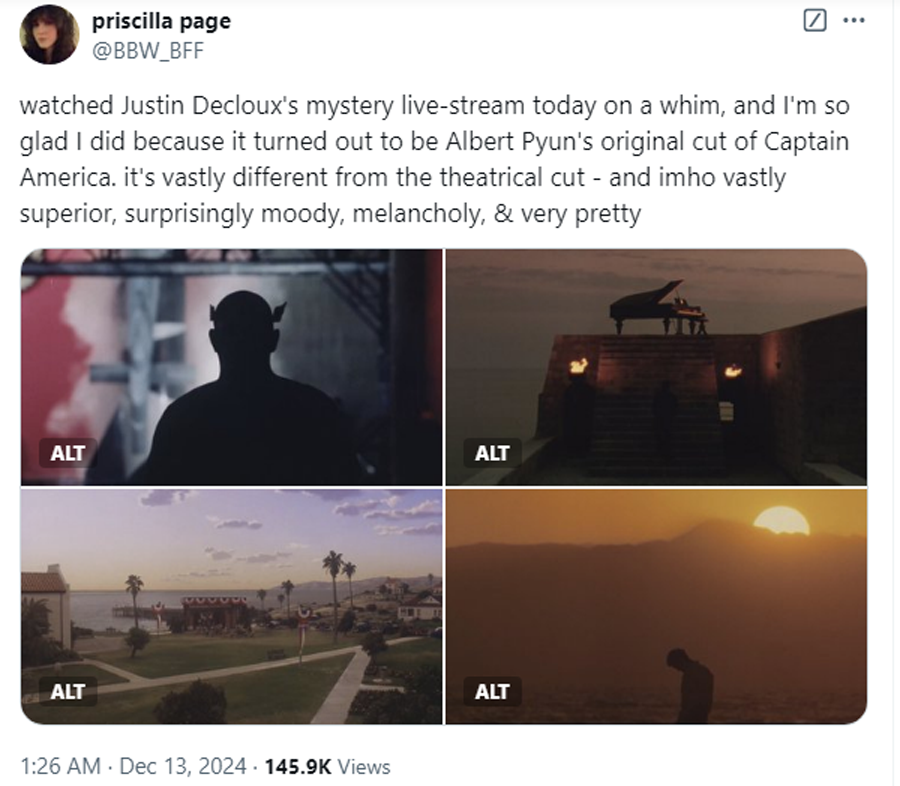
I will say, if I ever get a chance to see the extended version, and if it’s as good as some people are saying, I will happily revise my opinion of Captain America. I am a bit skeptical, since a lot of the film’s flaws don’t have much to do with the editing. But maybe spending some more time with Steve Rogers as a character (played by Matt “son of J.D.” Salinger, who is OK — but not much more than that — in the role) helps make Captain America someone to actually root and care for. In the released version, the character is thinner than the paper his comics are printed on.
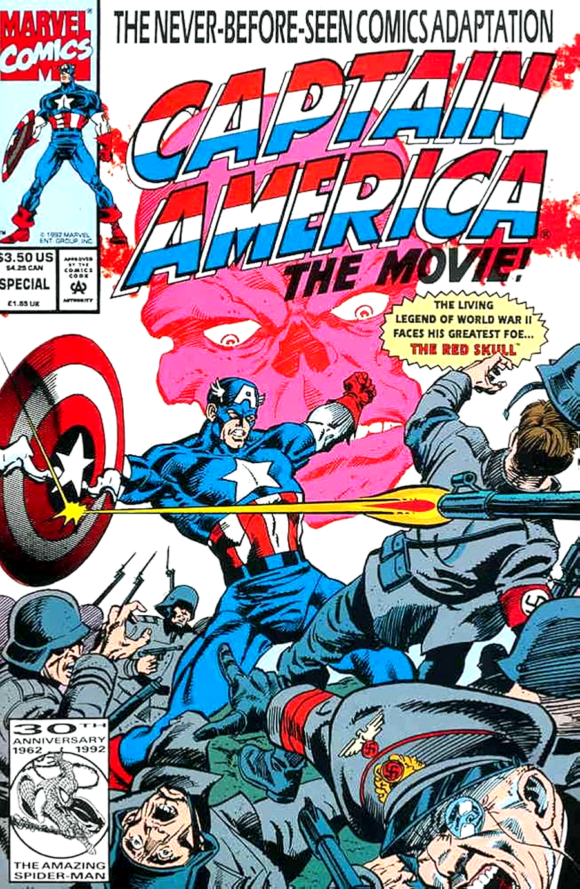
Speaking of comics, did you know Marvel released a one-shot adaptation of the movie? Neither did I! Credited to Stan Lee himself and drawn by Bob Hall and Tom Morgan, the Captain America Movie Special is one of my favorite things to examine here in REEL RETRO CINEMA: a comic book adapting a movie adapting a comic book. As you might expect, it improves on the movie in ways that play to the strengths of the comic book format: the action scenes with Cap are much, much more exciting, in the Mighty Marvel Manner!
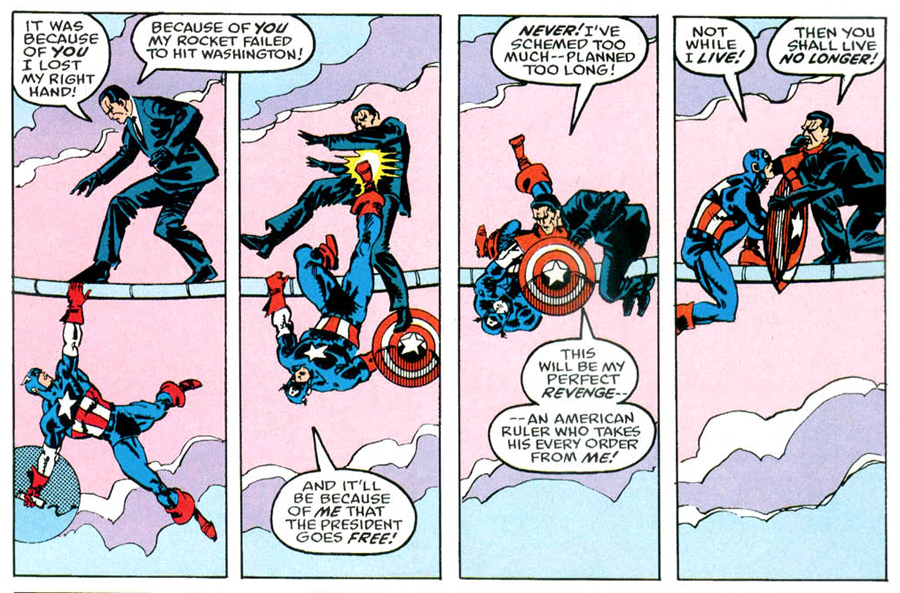
In the movie, Cap isn’t given some sort of triumphant introduction—the costume reveal is done in drips and drabs. In the Movie Special, they deliver a big, splashy panel finally showing Cap in all his (old) glory. Another moment the comic improves the movie is during the rocket scene, where Cap grabs the Red Skull and threatens to drag the Nazi into the sky with him. In response, the Red Skull grabs a knife and cuts his own hand off to free himself (as opposed to, IDK, cutting Cap’s hand off instead). The comic rewrites that sequence and avoids making the Skull look so laughingly stupid.
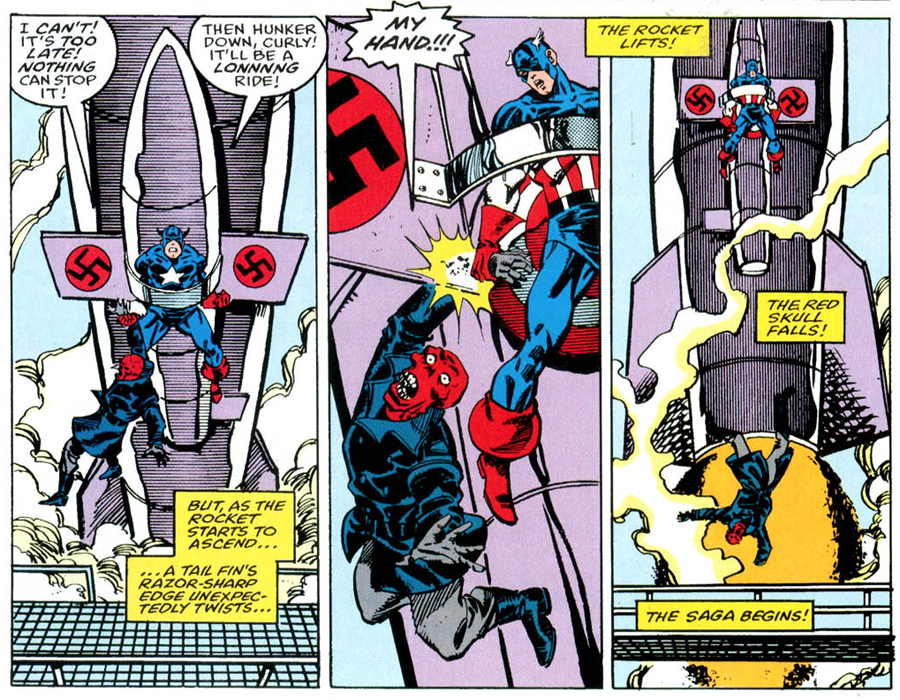
With the added space, we learn that the explorers who find Captain America in the ice are speaking German, which understandably freaks Cap out, leading his decision to storm out without saying a word make a lot more sense. The comic also hints at a scene supposedly in the longer “Pyun Cut,” where we see Steve dealing with the melancholy of being a man out of time and wrestling with the idea that, on his single mission as Captain America, he failed so spectacularly.
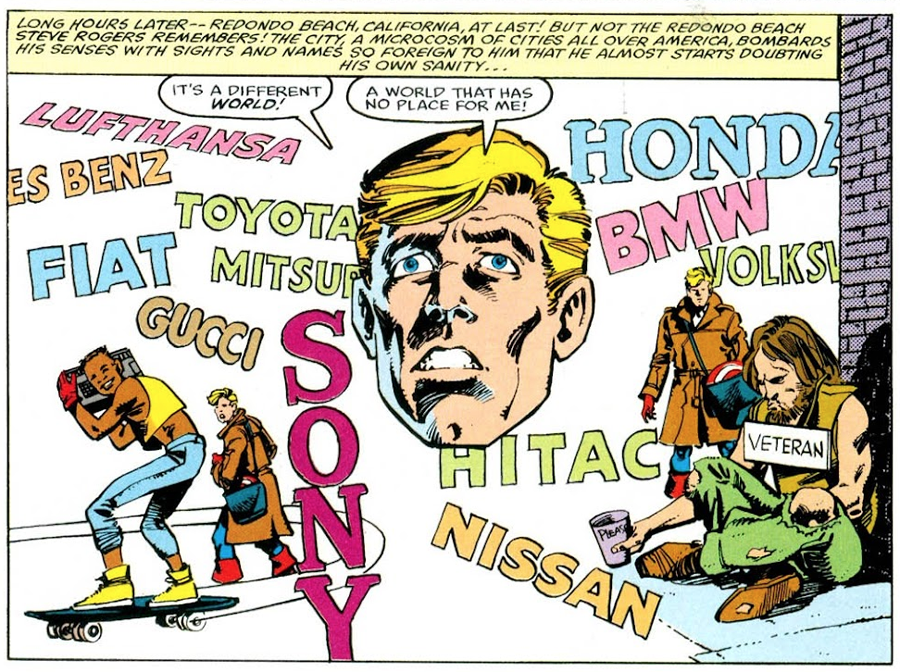
So maybe those who have seen it are correct, that the deficiencies in the budget, screenplay, and acting are a lot easier to take in the extended Captain America. I would love for Marvel to allow this version to be released officially, but that seems unlikely. With the MCU kicking back into gear with the release of Captain America: Brave New World, they probably want 1990’s Captain America buried back in the ice.
—
MORE
— TV’s 1979 CAPTAIN AMERICA Movie: A Big Heart and a Small Budget. Click here.
— 1979’s CAPTAIN AMERICA II: A Salute to the Red, White and Kitsch. Click here.
—
ROB KELLY is a podcaster, writer, illustrator, and film commentator. You can find his work at robkellycreative.com.

February 14, 2025
There’s only one major critique I have for it, upon a recent revisit. I don’t mind we don’t get to see Cap in costume a lot. I don’t mind the weird origin story for the Red Skull. My main issue is the pacing. Captain America/Steve Rogers is supposed to be a MAN OF ACTION, and this movie has a SPRINKLING of proper action in it. Which is odd when you consider Albert Pyun’s previous movie to this was the JCVD film “Cyborg”, which I lovingly call a movie that feels exactly like a video game, in terms of wall-to-wall action!
February 14, 2025
Great article Rob! I remember following the production of this in Comics Scene magazine…and then it just disappeared. I had no idea the comic had come out. It was several years before I finally saw it. I was so starved for a Captain America film, I kinda liked it despite its obvious flaws. Time hasn’t been kind, especially with the excellent MCU films, and the pitch-perfect casting of Chris Evans as Steve Rogers. But oddly enough, First Avenger also made Cap and Red Skull “brothers” in a sense. But that’s something that was first really emphasized in The Adventures of Captain America mini-series by Fabian Nicieza and Kevin Maguire, which came out around the same time the movie was SUPPOSED to. Must have been something in the water…
February 14, 2025
Didn’t his mask have rubber ears over his real ears?
February 14, 2025
Yes.
February 14, 2025
IMHO, probably THE WORST superhero film ever made. Why didn’t someone stop it before it even left the studio?
February 14, 2025
Yes, a great mystery that may never be resolved is why this was allowed to be released in it’s condition.
Something else that bugged me was the way Steve would feign illness to trick people so he could slip away.
Since the multiverse is now a “thing”, I would like to designate this version of Cap’s universe “Earth L-053R” (loser).